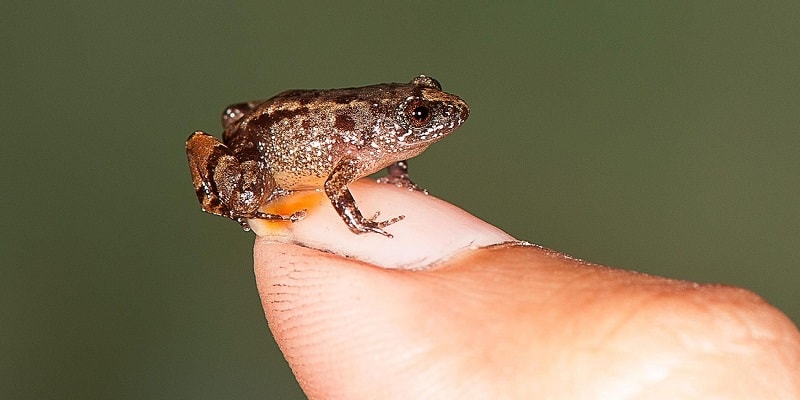Paedophryne amauensis holds the title of the world’s smallest frog, and its diminutive size is nothing short of astonishing. This tiny amphibian, discovered in Papua New Guinea, measures just 7.7 millimeters in length, making it so small that it could easily be mistaken for a speck of dust.
The remarkable small size of Paedophryne amauensis allows it to thrive in its natural habitat, which consists of leaf litter in rainforest environments. Its coloration, typically a blend of browns and greens, helps it blend seamlessly into its surroundings, providing excellent camouflage against predators. This adaptation is crucial for survival, as it allows the frog to remain hidden from both larger animals and potential threats.
Paedophryne amauensis is primarily terrestrial, spending much of its life on the forest floor. It relies on a diet of tiny invertebrates, such as ants and mites, which it consumes with its specialized feeding habits. The frog’s small size enables it to navigate through the intricate leaf litter of its environment, where it can find food and shelter.
Due to its elusive nature and the difficulty of observing such a tiny creature, much about its behavior and breeding habits remains a mystery. However, like many frogs, it is likely to be involved in a complex life cycle that includes both aquatic and terrestrial stages.
As with many species found in biodiverse regions, Paedophryne amauensis faces threats from habitat loss due to deforestation and climate change. Protecting its rainforest habitat is essential for the survival of this unique species. Conservation efforts focused on preserving these ecosystems are crucial for ensuring that the world’s smallest frog continues to thrive in its natural environment.
Paedophryne amauensis is a fascinating example of nature’s diversity and adaptability. Its tiny size challenges our perceptions of what constitutes a frog and highlights the importance of preserving biodiversity. As scientists continue to study this remarkable species, it serves as a reminder of the wonders of the natural world and the need to protect the delicate ecosystems that support such extraordinary life forms.